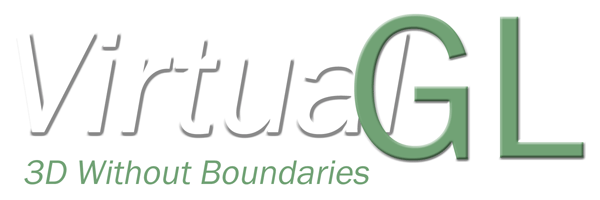| Version 67 (modified by , 8 years ago) ( diff ) |
|---|
Graphical Login (VNC)
Graphical Login (VNC) only with JURECA login possible.
Remote visualization, either implemented within visualization applications themselves or through server software,
A graphical login using Virtual Network Computing (VNC) simplifies the access to remote visualization. |
|---|
VNC provides a complete graphical and remote desktop by
- transmitting the keyboard and mouse events from your computer to the remote machine and
- relaying the graphical screen updates back in the other direction.
VNC is
- platform-independent (VNC viewers are available for almost any operating system)
- application-independent (no need for remote visualization support inside the application)
- multiple clients may connect to a VNC server at the same time sharing the same session (support, presentation, group discussions)
VNC software used at the JSC:
Option A)
Strudel (Scientific Remote Desktop Launcher)
................................................................................................................................................................................... |
|---|
Option B)
vncserver/ssh/vncviewer (manual connection)
................................................................................................................................................................................... |
|---|
Use hardware acceleration in your VNC session
Any OpenGL application running in your VNC session should be started with vglrun to use the hardware acceleration provided by the visualization nodes.
e.g. ParaView
Open a terminal in your VNC session and:
# What versions of ParaView are available? module spider ParaView # load ParaView dependency module load intel-para # load ParaView module load ParaView
# start ParaView Server and GUI using VirtualGL for hardware acceleration srun -n 24 vglrun pvserver vglrun ParaView
Connect to the pvservers on localhost:11111
e.g. VisIt
Open a terminal in your VNC session and:
# change Stage module use /usr/local/software/jureca/OtherStages module load Stages/.Stage1 # What versions of VisIt are available? module spider VisIt # load VisIt dependency module load intel-para/2015.07 # load VisIt module load VisIt/2.10.0
# start VisIt using VirtualGL for hardware acceleration vglrun visit -hw-accel
Hints
- press F8 to enter VNC-Viewer Options (example: toggle to full screen)
- sync clipboard between client and server
- To reset your VNC-password delete ~/.vnc/passwd
any feedback welcomed - h.zilken@…, j.goebbert@…
Attachments (9)
- strudel_icon.png (27.8 KB ) - added by 8 years ago.
- manual_icon.png (4.9 KB ) - added by 8 years ago.
- Trac_Setup_VNC.png (105.3 KB ) - added by 8 years ago.
- screenshot_vnc.png (151.2 KB ) - added by 8 years ago.
- xpra-logo.png (6.5 KB ) - added by 7 years ago.
- virtualgl_vertical_small.png (10.2 KB ) - added by 7 years ago.
- Strudel_GUI.png (17.7 KB ) - added by 7 years ago.
- Xpra_GUI.png (21.8 KB ) - added by 7 years ago.
- virtualgl.gif (19.0 KB ) - added by 6 years ago.
Download all attachments as: .zip


